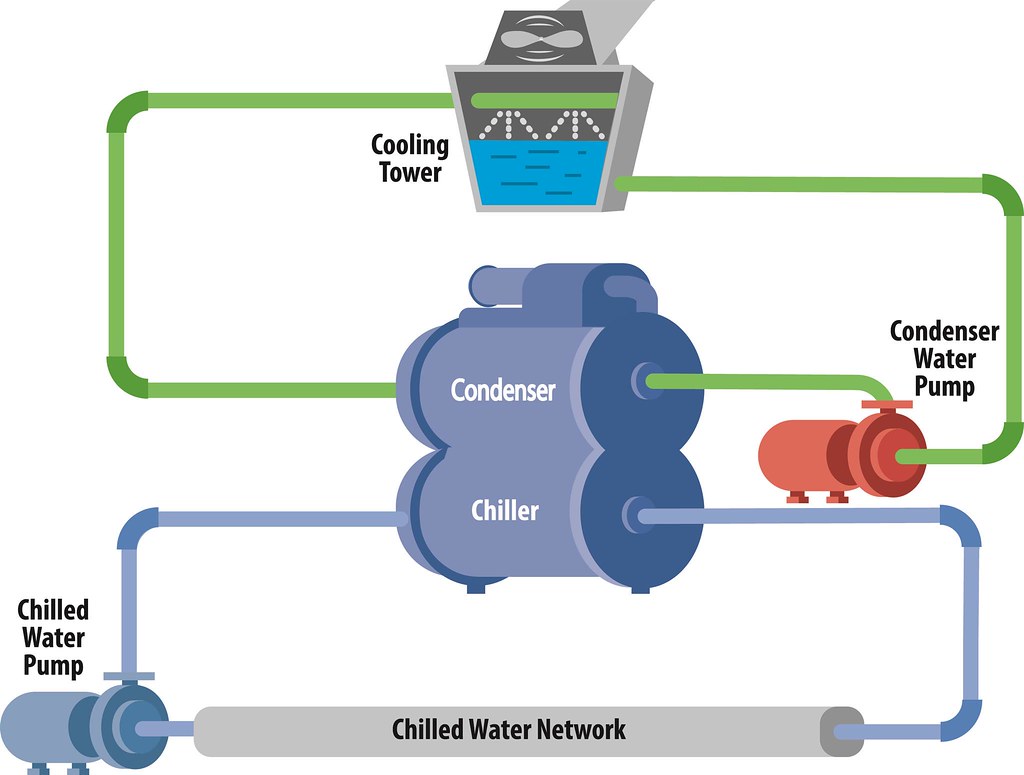Hvac System Diagram – When you think of a home’s heating, ventilation, and air conditioning (HVAC) system, you probably picture a single unit that keeps your home at the perfect temperature throughout the year. While this is sort of true, it’s also much more complicated than that.
Your home likely has several individual components in its HVAC system that work together to keep you comfortable all year long. An HVAC system diagram breaks down how these pieces are connected and what their specific functions are.
An HVAC system diagram is a visual representation of the operation of your home’s heating, ventilation, and air conditioning systems. It shows all the different functional areas of the setup, from intake to exhaust. You can find detailed breakdowns online or create your own with just a little bit of knowledge about standard conventions for diagrams like these. Ready to learn more? Let’s begin!
Hvac System Diagram: How Does it Work?

A HVAC system diagram is an essential visual aid for anyone learning about the structure of a heating, ventilation and air conditioning system.
The diagram clearly illustrates how different components interact and support one another in order to provide the end user with reliable, comfortable temperature control throughout their home or business.
A visual representation of a complex system can be challenging to create from scratch. Luckily, there are pre-made HVAC system diagrams that are perfect for learning about this type of setup without needing to understand technical jargon.
While not every building will have exactly the same type of HVAC system, these common elements are found in almost every structure that has climate control. Read on to learn more!
Basics of a HVAC System
A HVAC system is a machine that distributes indoor climate control. These systems have been a part of human life since the invention of modern air conditioning. A HVAC system circulates air through a building utilizing a variety of different tools and systems.
Within a building, a HVAC system is responsible for cooling, heating, humidification, dehumidification, ventilation, and indoor air quality. All of these components work together to create the perfect indoor climate control for both residential and commercial buildings. Before the invention of HVAC, buildings were designed with minimal concern for temperature and ventilation control.
Early buildings were built with windows and doors made of thin wood or fabric. The placement of these openings was chosen with little regard for temperature. The only barrier between indoor and outdoor air was a thin wall and a poorly insulated roof. The temperature difference between the inside and the outside meant that the indoor air was often hotter or colder than desired. This lead to uncomfortable temperatures and poor indoor air quality.
Compressor
The compressor is a large machine that sits outside of the house and contains the refrigerant for the HVAC system. This machine is important because it helps run the rest of the HVAC system.
The compressor compresses the refrigerant so that it can be sent throughout the house inside of the ductwork. The compressor also provides cool air so that the rest of the HVAC system doesn’t get too hot. Without the compressor, the air conditioners and heaters in the house wouldn’t be able to run properly.
Condenser and Evaporator
The condenser and the evaporator are the two main parts of a heating and cooling system. The condenser is where the refrigerant in the system is boiled off. This part of the system uses a fan and an electric motor to move the air so that the refrigerant can turn into a liquid again. The evaporator is the part of the system where the liquid refrigerant is turned into a gas. The evaporator uses a fan to pull the air through the system and distribute it throughout the house.
Ductwork
The ductwork is what brings air from the outside and the inside of the house. The ductwork is where the air flow is controlled by the system. You can change how the ductwork is set up by adjusting the vents on the system.
Resistor
The resistor is a device that allows you to control the speed at which the fan moves. The fan is responsible for moving the air throughout the house and cooling down the system. The more powerful the fan is, the better the system will cool down and the quicker it will be able to do so.
Fan
The fan is responsible for moving the air throughout the house and cooling down the system. The more powerful the fan is, the better the system will cool down and the quicker it will be able to do so.
Conclusion
A HVAC system diagram is an essential visual aid for anyone learning about the structure of a heating, ventilation and air conditioning system. The diagram clearly illustrates how different components interact and support one another in order to provide the end user with reliable, comfortable temperature control throughout their home or business.
visual representation of a complex system can be challenging to create from scratch. Luckily, there are pre-made HVAC system diagrams that are perfect for learning about this type of setup without needing to understand technical jargon. While not every building will have exactly the same type of HVAC system, these common elements are found in almost every structure that has climate control. Read on to learn more!